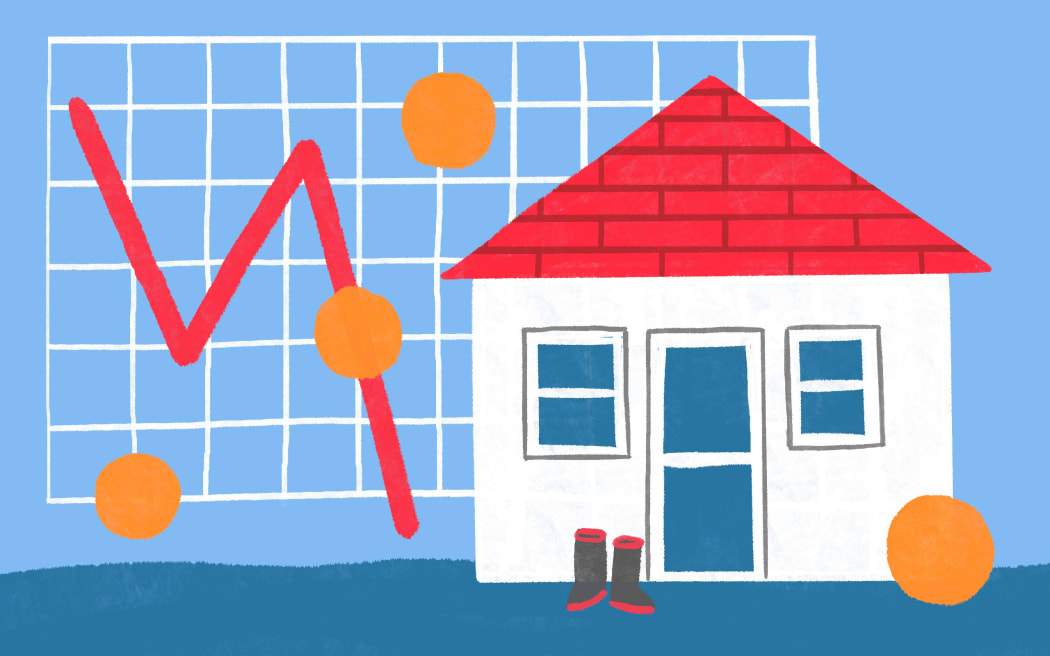Business
Home Loan Rates: Will They Fall Below 4 Percent Soon?

Home loan interest rates in New Zealand are on a downward trajectory as the Reserve Bank of New Zealand reduces its official cash rate (OCR). Many borrowers are now questioning whether rates could dip below 4 percent in the near future. This speculation is fueled by the current market conditions, where nearly half of New Zealand’s home loans are either floating or due for re-fixing within the next six months.
Arguments for a Drop Below 4 Percent
David Cunningham, chief executive of Squirrel, is optimistic about the potential for rates to fall. He suggests that if the OCR decreases to 2.25 percent next month, one-year home loan rates could drop below 4 percent by early 2026. Cunningham points to wholesale swap rates as a significant factor influencing home loan rates, as these rates typically reflect market expectations for the OCR.
“The catalyst for further reductions will be the banks continuing to lower their term deposit interest rates, which will gradually reduce overall bank funding costs,” Cunningham explained. He also mentioned that Squirrel has developed an AI model to predict interest rates based on wholesale data.
According to his analysis, if the OCR does reach 2.25 percent in late November, the model indicates a likely shift towards a sub-4 percent one-year fixed mortgage rate early next year. He further noted that banks often use a pricing strategy known as “charm pricing,” where they set rates slightly below whole numbers to attract customers. “We reckon that if the one-year mortgage rate drops close to 4 percent, one of the banks will want to claim bragging rights to a rate below 4 percent,” Cunningham added.
Challenges to Rates Dropping Below 4 Percent
On the other hand, Gareth Kiernan, chief forecaster at Infometrics, remains skeptical about the feasibility of rates falling below 4 percent. He explained that during the last significant decline in interest rates in 2019, rates dropped under 4 percent only when the OCR had been maintained at 1.75 percent for over two years. He indicated that even a 25 basis point reduction in the OCR may not be sufficient to lower wholesale rates enough to achieve sub-4 percent home loans.
Kiernan emphasizes that longer-term rates seem to be more stable at higher levels. “I think you’d need to get an OCR of 2 percent before sub-4 percent becomes a possibility, at least from the big five banks,” he stated. Smaller lenders, he noted, might offer more competitive rates to draw in customers, but this is not representative of the larger market trends.
Looking ahead, Kiernan anticipates that home loan rates could begin to rise again around October next year, suggesting a need for borrowers to stay informed about the evolving financial landscape.
As borrowers navigate these fluctuations, they are encouraged to monitor developments closely. With the potential for significant changes in the coming months, the decisions made now could have lasting impacts on their financial futures.
-

 World4 months ago
World4 months agoTest Your Knowledge: Take the Herald’s Afternoon Quiz Today
-

 Sports4 months ago
Sports4 months agoPM Faces Backlash from Fans During Netball Trophy Ceremony
-

 Lifestyle4 months ago
Lifestyle4 months agoDunedin Designers Win Top Award at Hokonui Fashion Event
-

 Entertainment4 months ago
Entertainment4 months agoExperience the Excitement of ‘Chief of War’ in Oʻahu
-

 Sports4 months ago
Sports4 months agoLiam Lawson Launches New Era for Racing Bulls with Strong Start
-

 World5 months ago
World5 months agoCoalition Forms to Preserve Māori Wards in Hawke’s Bay
-

 Lifestyle4 months ago
Lifestyle4 months agoDisney Fan Reveals Dress Code Tips for Park Visitors
-

 Health4 months ago
Health4 months agoWalking Faster Offers Major Health Benefits for Older Adults
-

 Politics4 months ago
Politics4 months agoScots Rally with Humor and Music to Protest Trump’s Visit
-

 Top Stories5 months ago
Top Stories5 months agoUK and India Finalize Trade Deal to Boost Economic Ties
-

 Health2 months ago
Health2 months agoRadio Host Jay-Jay Feeney’s Partner Secures Visa to Stay in NZ
-

 World5 months ago
World5 months agoHuntly Begins Water Pipe Flushing to Resolve Brown Water Issue









